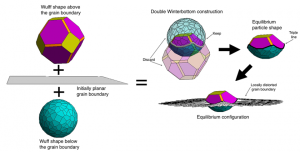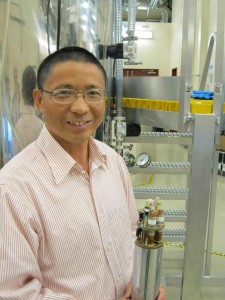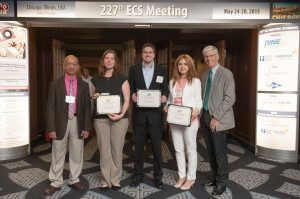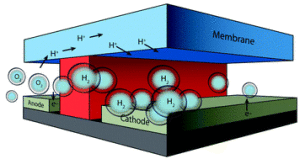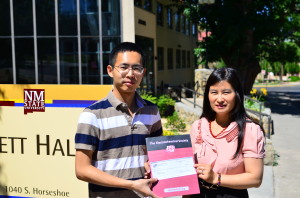
From New Mexico State University, Dr. Luo presents award check to ECS Student Member & ECS Edward G. Weston Summer Fellowship Recipient, Mr. Chen.
Beginning in 1928, these awards have been established over the years to assist students during the summer months in pursuit of work in the field of interest to The Electrochemical Society.
Announcing the ECS 2015 Summer Fellowship Recipients
Mr. Gen Chen
New Mexico State University
Advisor, Dr. Hongmei Luo
Edward G. Weston Summer Fellowship
Mr. Hadi Khani
Mississippi State University
Advisor, Dr. David Wipf
Colin Garfield Fink Summer Fellowship
Mr. Mohammad Mahdi Hasani-Sadrabadi
Georgia Institute of Technology
Advisor, Dr. Karl I. Jacob
Joseph W. Richards Summer Fellowship
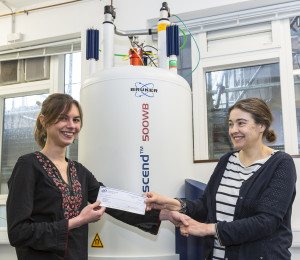
University of Cambridge Ph.D. candidate, Raphaële Clément (left), receives her ECS 2015 Summer Fellowship award check from adviser & ECS member, Professor Clare Grey (right).
Ms. Raphaele Clement
University of Cambridge
Advisor, Dr. Clare Grey
F. M. Becket Summer Fellowship
Mr. Alexander Pak
University of Texas at Austin
Advisor, Dr. Gyeong S. Hwang
Herbert H. Uhlig Summer Fellowship
Summer Fellowship Subcommittee (through the ECS Education Committee)
Mark Orazem
Vimal Chaitanya
Kalpathay Sundaram
Bryan Chin
Peter Mascher
Are you interested in supporting the ECS Summer Fellowship program or creating a new fellowship through ECS? Contact us for more information.


